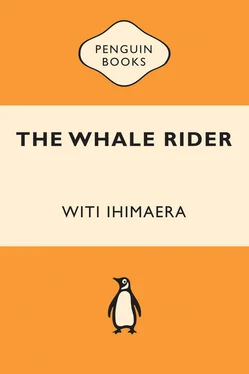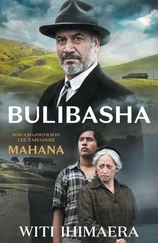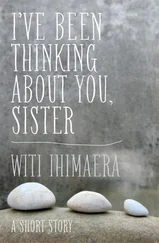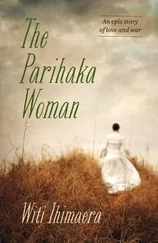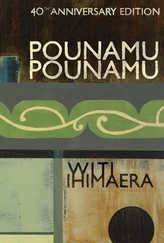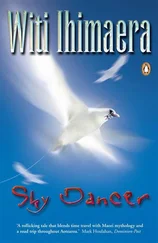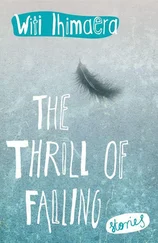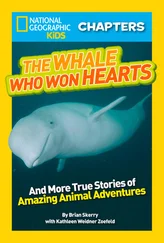Another variation tells that Kahutia Te Rangi had to leave a wife and a son, Rongomai Tuaho, in Hawaiki when he eluded Ruatapu. Many years later, pining for his father, Rongomai Tuaho sent a magic bailer to Aotearoa to ascertain if his father was still alive. Another strand of the whale rider story is that the island you see close by the beach at Whangara, Te Ana a Paikea, is the whale itself, transformed into a rock. You can reach the island at low tide, but at high tide in winter a stormy channel separates it from the mainland.
I am telling you this to indicate that Maori mythology is very rich. All the narratives are multilayered, complex, extraordinary and transcendent. They occupy a place between the real and the unreal, the natural and the supernatural — the world you can believe in and the world you are told not to believe in. This is why Maori mythology is so prevalent in my work: Maori and Polynesian stories come from a different source, a different inventory than western tradition, and I am writing from within that different tradition. Accompanying my work as an indigenous writer is a whole thrilling mythology and history that encompasses all of Polynesia and the Pacific.
The novel
I’m not sure how old I was when I first gazed upon that sculpture of the whale rider at Whangara and heard the saga of his epic voyage accomplished by fantastic means.
By 1956, however, when I was twelve, the story had become a magnificent compulsion for me. Occasionally at weekends I would cycle twenty-seven kilometres to Whangara. It was a long way, especially if there was a headwind; and if I was lucky somebody would pick me up in their truck. People knew who I was because of my father, Tom, who was a well known shearer and sportsman. One of them was Rangi Haenga, also a shearer. ‘Off to Whangara again, eh?’ he asked. He threw my bike in the back, gave me a lift up the East Coast highway and let me off at the turnoff to Whangara. A short pedal later and I was there, on the rise above the village, church, wooden houses, marae … and Paikea, an eternal sentinel gazing out across the sea.
I would eat my lunch and just stare and stare at that sculpture. I would ask boyish questions, like: ‘Do you kick a whale like a horse to make it go? How do you stay on a whale when it dives? Don’t whales dive miles deep? How do you keep your breath for so long? How did you speak to your whale? Did you know whale talk? Maybe whales speak Maori!’ I gathered as much information as I could about Hawaiki, too. With great awe I realised that the distance was huge — over 3000 miles.
And so I would sit crosslegged, looking up at the sculpture of Paikea, dazzled by that phenomenal voyage. Sometimes I stayed so long that Moni Taumaunu would ring Mum and Dad in Gisborne and tell them, ‘If you’re looking for Witi, he’s out here at Whangara. He can sleep with us tonight, or else maybe somebody is coming into town and can bring him back.’
At the time, my sister Caroline and I belonged to the Comet Swimming Club at the municipal Macrae Baths. After practice I liked to take a deep breath and see how long I could stay underwater. ‘Where’s Witi!’ the instructors would say, panicking. ‘Oh, he’s all right. There he is, as usual, sitting at the bottom of the pool.’ But every time I surfaced I would check the time on my watch and get very cross: four minutes, not good enough. And down I would go again.
It never crossed my mind that the story might be a fantasy. As far as I was concerned, Paikea really existed; a whale did rescue him and he rode on it. Nobody could persuade me otherwise. Indeed, when I saw the film Moby Dick (1956), starring Gregory Peck and directed by John Huston, at the local theatre, I was annoyed at the way the big white whale was demonised: he was only trying to save himself from Captain Ahab.
Well, I grew into adulthood, and I didn’t achieve anything as spectacular as Paikea did. But in many ways, his story became the symbol of what I should do in my life — always look to the horizon, pursue my dreams, and not let anybody or anything stop me from fulfilling my destiny.
One of those dreams was to become a writer. It wasn’t high on my list but, as the years went by and I didn’t become a fighter pilot, All Black, film star or astronaut, writing moved more into the zone of possibilities. Another dream was to see the world. It was not unexpected, therefore, that thirty years later, in 1986, I had turned myself into both a writer and a diplomat for the Ministry of Foreign Affairs (that had never been on the list) in the United States. At that time I was forty-two, working in New York and residing in apartment 33G at 67th Street and Broadway. From the apartment there was a view down the Hudson River towards New York harbour. By then I had two daughters, Jessica and Olivia, aged nine and seven, who lived in New Zealand but came to stay with me for the holidays. On one of those vacations, over Christmas — New Year, the weather was freezing and the best place to go to keep warm was a nice heated movie theatre. We saw lots of movies on that particular vacation — including An American Tail, Explorers, The Ewoks: Caravan of Courage and Flight of the Navigator — but they had a curious effect on Jessica. One afternoon, she stamped her foot on the pavement and asked me, ‘Daddy, why are the boys always the heroes and the girls so hopeless? All they do is yell, “Save me, save me, I’m so helpless!”’ Her comment made me double up with laughter, but I knew what she was talking about. My daughters have a marvellous mother, Jane, who has always had very strong views about the equality of women.
I haven’t got my calendar with me, but it must have been after Jessica and Olivia returned to New Zealand and spring arrived in New York that an astounding event occurred: a whale came swimming up the Hudson River to Pier 86 at 12th Avenue and West 46th Street. I can recall watching the event on local television; and today it has become part of the city’s folklore: ‘Yeah, that whale, what a thing to do, right?’ You see, the Hudson River at the time was very dirty, what Maori call pango — a word that is often translated as ‘black’ but that has more distasteful connotations. Some people thought the whale had lost its way. As for me, I was really overwhelmed with aroha, love: that whale had come to say hello. It had come through all that pango stuff to tell me that although I was living on the other side of the world I was not forgotten. Filled with gratitude and inspired by both events — the visit of my daughters and the whale — I wrote the novel, which takes place in New Zealand, on the other side of the world. Indeed, I was able to write the book at astonishing speed; that’s what inspiration does to you. Visitors turned up during the writing, but fortunately they understood — well, I hope they understood — when I couldn’t go out on the town with them. By the end of six weeks the book was finished. Win Cochrane, my boss, cast a benevolent eye over me when I snatched the occasional half-hour at the consulate to complete the second draft. Sometimes he would come out of the office to find his secretary, Vivienne Troy, typing the manuscript.
I called the book The Whale Rider , and I presented the manuscript to Jessica and Olivia the next time they came to visit. I had written it for them. Then I sent a copy to my publisher, David Heap, in New Zealand; and the first edition was published in hardback in 1987. I was still in New York, so I arranged for David to take the book to Whangara where it could be blessed and launched. The kaumatua of the marae committee was Jack Haapu, and he and Nohoroa Haapu organised the hui. My parents and sister went out to Whangara, and later they told me how stunning the evening had been: the moon came out, shining full upon the carving of Paikea, and far out to sea a large whale leapt into the air.
Читать дальше
